The History of Lewd: Gals Panic S
Okay, I guess it’s about time. I’ve referenced it numerous times over the course of this series — as well as in modern homages to it — so I think it’s probably time we looked at a Gals Panic game.
There are actually a fair few of them, so rather than just attempting to go through all of them (or just starting at the beginning), I’ve picked out Gals Panic S from 1997 to examine today. This is a particularly appealing installment in the series for many people due to its good quality artwork and its solid presentation all round — it’s the third entry in the series which used anime-style artwork rather than digitised photos, and thus has a nice degree of polish about it.
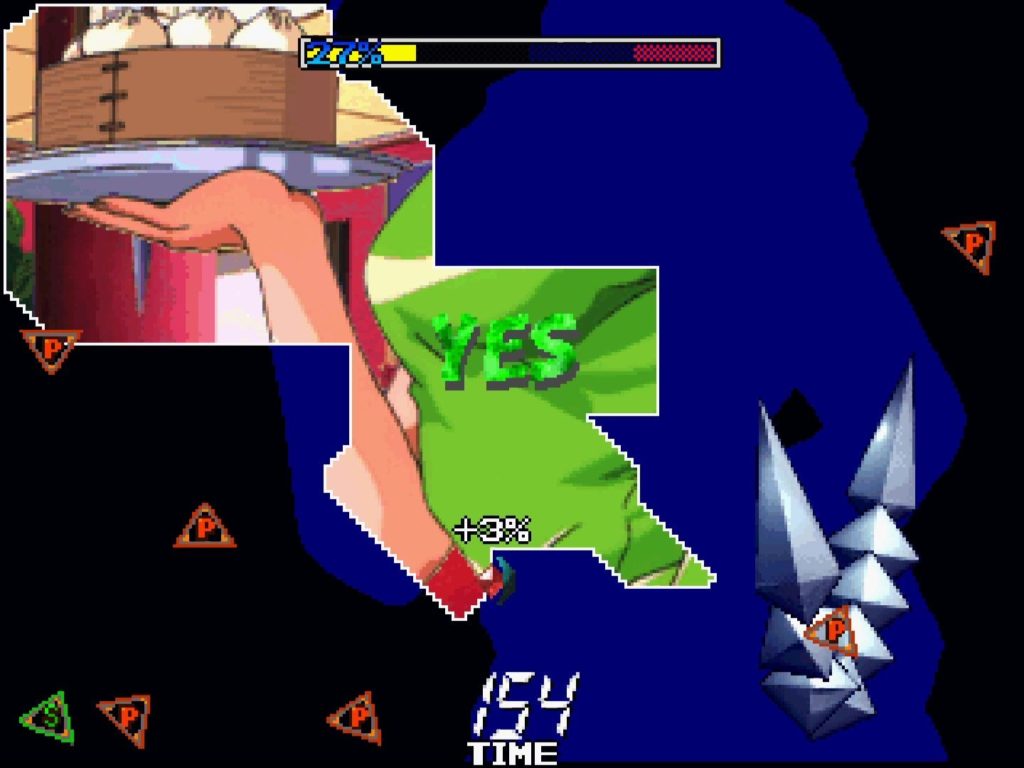
For the unfamiliar, the Gals Panic series is a range of games developed by Kaneko in which your aim is to uncover the silhouette of an image. The way in which you do this is by drawing lines across the playfield; completely enclosing an area reveals what is underneath, whether that is silhouette or background.
You are opposed in your efforts by some sort of “boss” enemy which wanders around the stage attacking you under various circumstances. If you or the line you are drawing are hit while you are drawing, you lost a life; conversely, while you remain on the boundary of the uncovered area, you are mostly safe. That is, unless the boss has a means of launching high-voltage sparks onto the boundary you’re on!
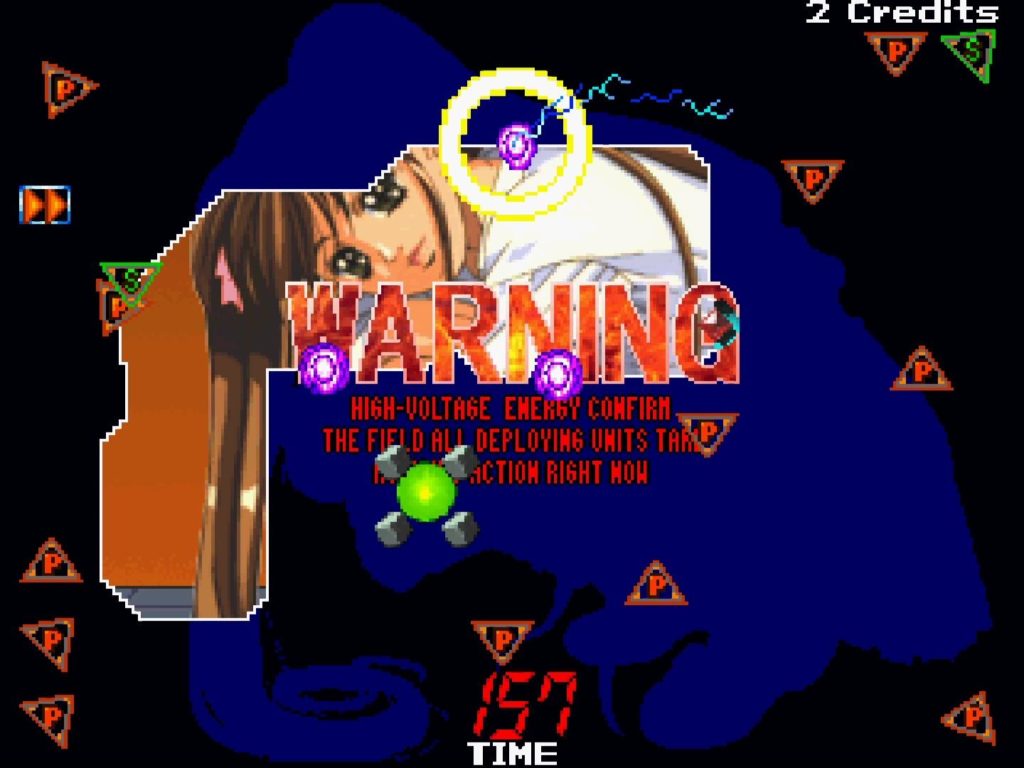
If all this sounds a bit like Taito’s classic arcade game Qix, you would be absolutely right. In fact, Kaneko developed Qix sequel Super Qix for Taito back in 1987, and apparently developed a taste for line-drawing, outline-revealing games in the process, because they followed it up with a whole bunch of Gals Panic games.
Gals Panic S is part of a distinct subseries of Gals Panic games that has a more slick, modern feel than the distinctly Qix-esque early installments in the series. There are a number of differences from the standard Qix formula that give it this feel.
The first one you’ll notice is that when you start a stage, hitting the button with proper timing will reveal part of the silhouette for you, and this revealed portion is where you start from, rather than the boundary of the image as in earlier games. There’s often a bit of a gamble here; you can reveal a bunch of image for free, but it can sometimes put you in a bit of a vulnerable position!
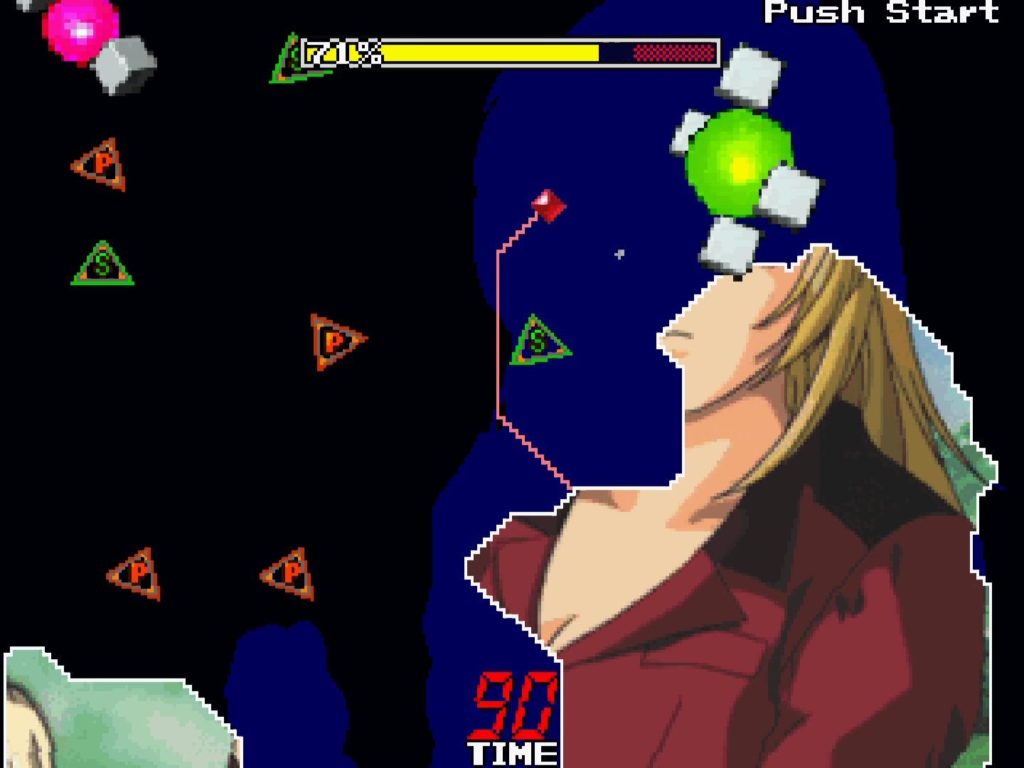
Secondly, you can draw diagonally, which was not possible in either Qix or the original Gals Panic games. This makes a big difference to the overall feel of the game, and is probably the biggest contributor to Gals Panic S feeling noticeably “smoother” to play than its predecessors.
Thirdly, you can fight back against the boss. This had actually been a feature in the series since Gals Panic 4 — which was also the first installment to feature anime-style art rather than photographs — but is implemented a little differently here. While in Gals Panic 4 you built up a stock of “bombs” through revealing 5% or more of the silhouette at once and could then set them off in succession to increase the ferocity of your attacks, in Gals Panic S your attacks go off immediately, with their power determined by the amount of silhouette you reveal at once.
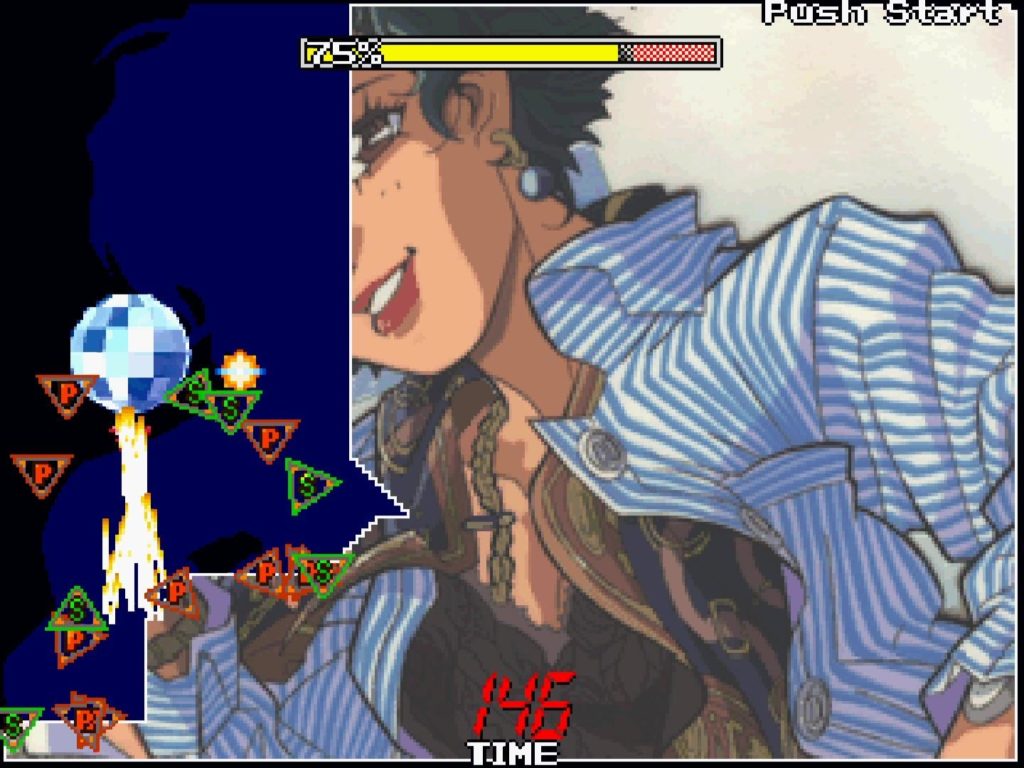
Attacks don’t defeat the boss enemy completely, but they can stun it, slow it down, make it smaller or dispatch some of the additional enemies they spew out onto the screen over time. As such, they’re an essential part of playing the game effectively — though they get harder and harder to pull off the further you go.
And herein lies the main problem with Gals Panic S; while its presentation is lovely, its action is delightfully smooth and the girls are super-cute, it is, unfortunately, one of the most cynically designed arcade games you’ll ever play. It’s a textbook example of both “a fool and his money are soon parted” and “sex sells”, as you’ll rapidly discover for yourself once you get through a couple of deceptively straightforward early stages.
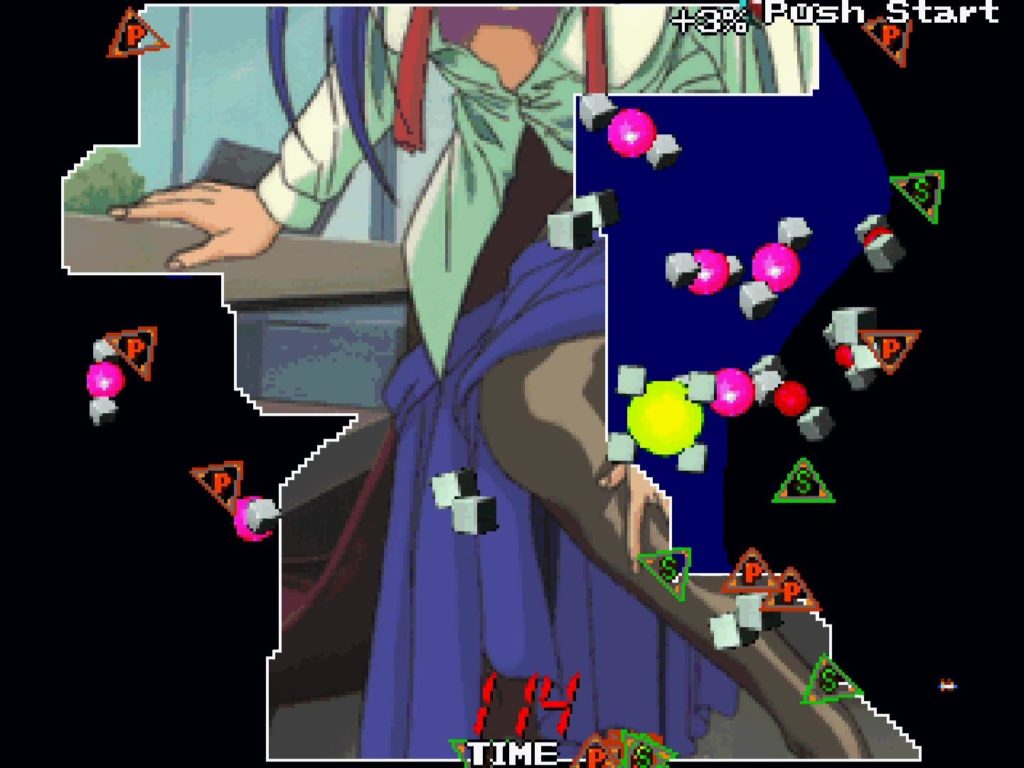
The problem is the way the enemies behave — after passing a certain point in the game progression as a whole, they simply become too fast, too numerous or both. It becomes near-impossible to reach that all-important 5% boundary to set off an attack because all the enemies on screen home in on you the second you start drawing, making it a frustrating chore to play.
In the last few stages of the game, leaving the safety of the boundary immediately causes the bosses set off bullet patterns that would be tricky to navigate in a regular shoot ’em up, let alone a game where your movement is constrained somewhat. And yes, each and every one of those bullets will kill you if it hits either your line or you. That or they’ll fire lasers that actively undo the work you’ve been doing to clear the silhouette. Infuriating.
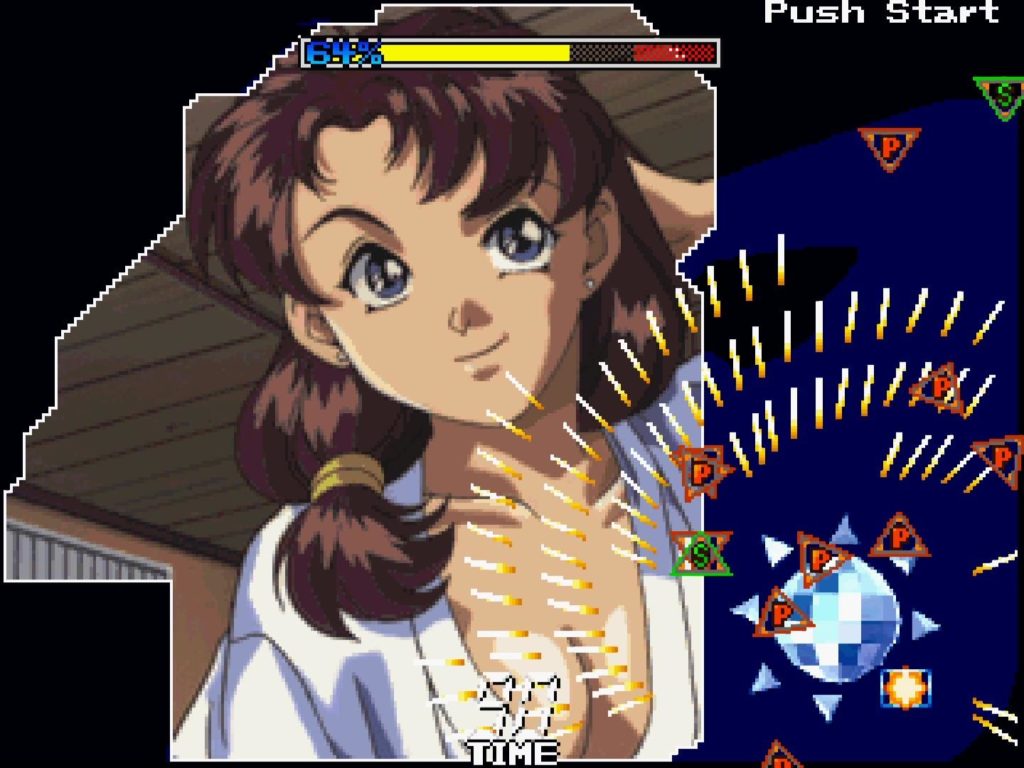
What we have here is a fairly transparent example of a game that has not necessarily been designed with the player’s best interests at heart — a dirty little secret of arcade games that it’s easy to forget in these days of widespread emulation, where we no longer need to put in coins to continue playing. Gals Panic S has been designed to keep the player putting those coins in with the promise of mildly lewd imagery (and it is pretty mild in Gals Panic S) but making individual credits last increasingly short amounts of time the longer the player has been playing.
The reason for this is arcade operating 101: while it’s great to have a single player pumping coin after coin into a machine, it’s better to have a line of people all keen to pump a few coins into a machine. Why get one player hooked when you could get ten involved?
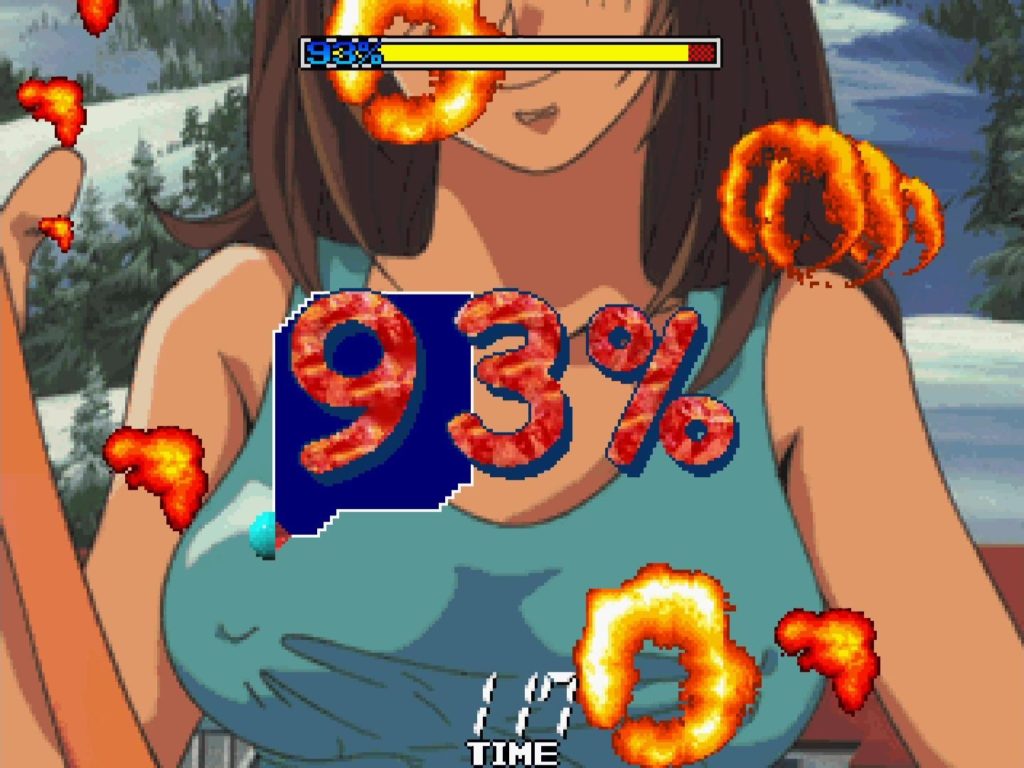
With this in mind, many arcade games are designed to become unfeasibly difficult after a particular point to encourage that one player to move on, and for someone else to be able to take their place. Gals Panic S, regrettably, very much falls into that category — and to add insult to injury, the end sequence if you do bother to credit-feed your way to the finale is completely underwhelming, too, consisting of nothing more than the images you’ve already seen in a brief slideshow. There isn’t even a high score table — indeed, the game lacks a scoring system altogether.
Taking all that into account, it would be easy to say that Gals Panic S simply isn’t worth bothering to play today. But somehow, despite all its flaws and issues, it is fun and enjoyable to play on a simple, primal level — and the whole thing is infused with a pleasant degree of good humour, too. Thus, it’s best experienced for just a single credit or two at a time rather than in the pursuit of completion — whether you’re playing it emulated, or you happen to stumble across an original machine somewhere!
Think of it as the video game equivalent of a no-strings fling or something. Have fun for a bit, then walk away and do absolutely anything else without a second thought!
Join The Discussion
Rice Digital Discord
Rice Digital Twitter
Rice Digital Facebook
Or write us a letter for the Rice Digital Friday Letters Page by clicking here!
Disclosure: Some links in this article may be affiliate links, which means we may earn a small commission if you make a purchase after clicking on them. This is at no additional cost to you and helps support Rice Digital!
- Letter from the Editor: passing the torch - June 30, 2023
- Super Woden GP 2 is looking promising - June 30, 2023
- Inti Creates is making a 32 bit-style Love Live action platformer - June 26, 2023







